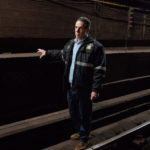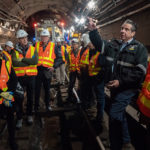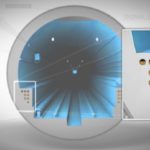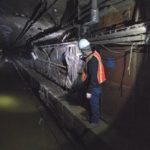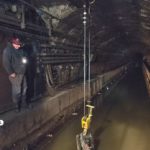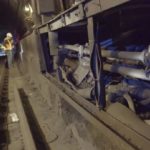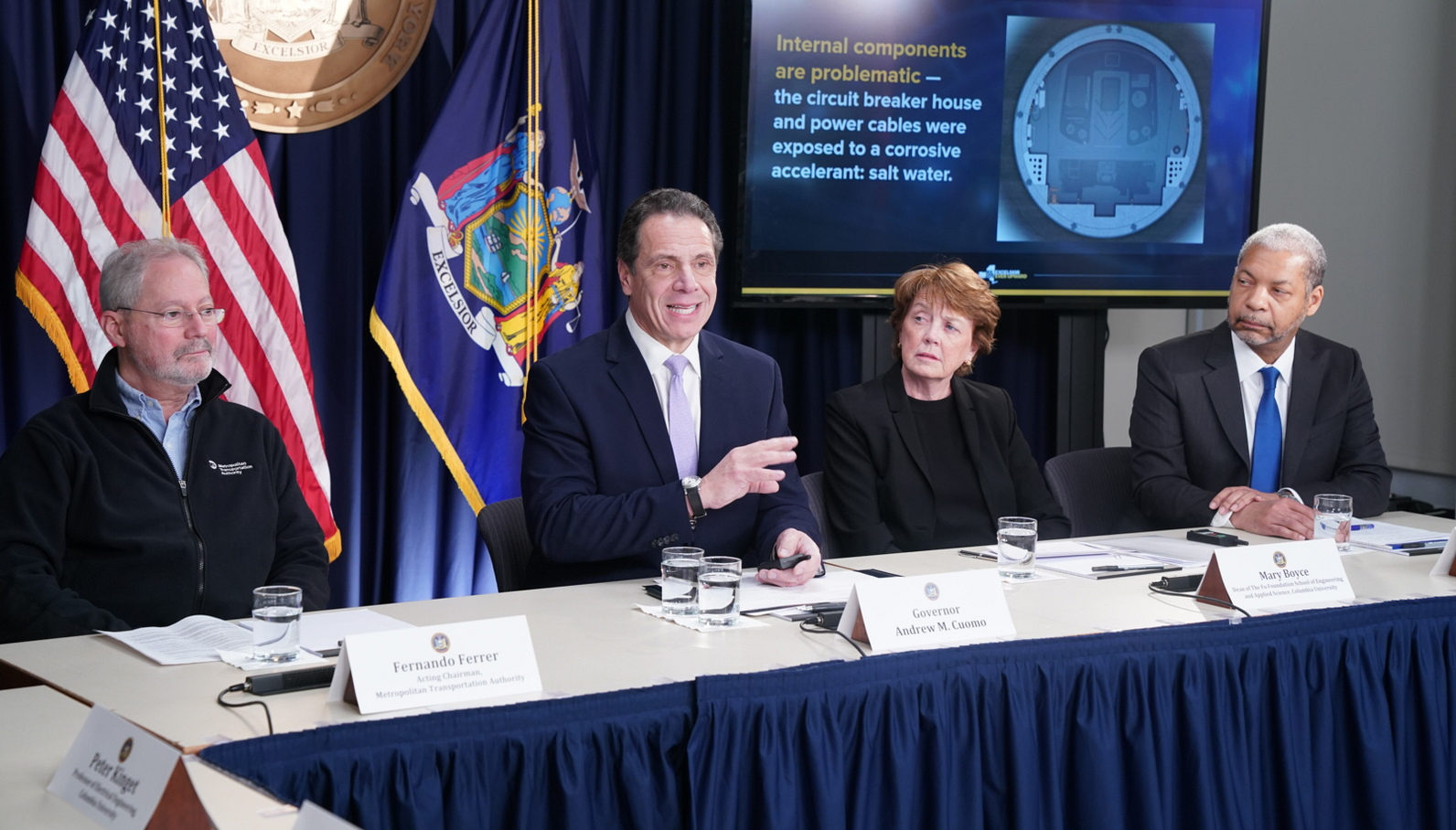

News
NYC subway closure canceled, Elon Musk’s Boring Company tapped for ideas to improve other systems
The Governor of New York State, Andrew Cuomo, announced on Thursday evening that the current plan to shut down the 225,000 commuter-strong L-train tunnel in the New York City public transportation system for a 15-month-long repair process will no longer be necessary due to a plan implementing new reconstruction techniques. After consulting with a panel of expert engineers from Columbia and Cornell Universities, a new design was proposed to be used in the tunnel which would streamline the repair process and require closures during nights and weekends with partial train tunnel service still available. When asked in a conference call Friday whether other innovators such as Elon Musk of Tesla and The Boring Company were consulted, the governor said Musk had not advised on this specific issue, but was consulted on improvements to the subway’s signaling system. The Metropolitan Transport Authority (MTA), New York’s transportation network, accepted the Governor’s panel recommendations following the announcement.
The L train tunnel under the East River connecting Brooklyn and Manhattan in New York, known as the Canarsie Tunnel, was damaged during Hurricane Sandy, the Category 3 major hurricane which affected the entire eastern seaboard of the United States in 2012. Its storm surge hit NYC on October 29, flooding huge portions of the island, including 9 of the 14 underwater tunnels in the city’s transport system. Of these, 6 have already been repaired. According to the MTA, the damage to the Canarsie Tunnel is comparable to tunnel damage experienced on 9/11, underlining the extent of the repairs needed and the reason behind the original required shutdown.
- Governor Andrew Cuomo with engineering consultants surveying the Canarsie Tunnel. | Credit: New York State Governor’s Office
- Governor Andrew Cuomo with engineering consultants surveying the Canarsie Tunnel. | Credit: New York State Governor’s Office
- A graphic representation of the duct banks damaged in the Canarsie Tunnel during Hurricane Sandy. | Credit: MTA
Saltwater flooding in from the East River during Sandy significantly damaged the infrastructure of the 7,100-foot-long tunnel, including tracks, signals, switches, cables, and lighting. The flood waters additionally filled protected cable tube pathways called “duct banks” throughout the tunnel, and once dry, the silt hardened to a cement-like consistency inside them, making it impossible to rip out and restore the damaged components. Canarsie Tunnel also opened in 1924, adding age to the brewing number of problems being amplified by the lingering effects of corrosive saltwater remnants from Sandy.
In 2016, residents were informed the tunnel was possibly going to be shut down for 15 months to address the extensive repairs, causing significant commute challenges for the approximately 225,000 riders depending on the service. The date for service closure was scheduled to begin April 27, 2019, but the impending deadline motivated Governor Cuomo to seek out alternative solutions. “I can’t tell you the number of people in Brooklyn who have looked me right in the eye and said, ‘Are you sure that there is nothing else that can be done and there’s no way you can possibly shorten this?’,” Cuomo stated in a recent press conference announcing the new subway repair plan.
- Damage sustained by the Canarsie Tunnel during Hurricane Sandy. | Credit: MTA
- Damage sustained by the Canarsie Tunnel during Hurricane Sandy. | Credit: MTA
- Damage sustained by the Canarsie Tunnel during Hurricane Sandy. | Credit: MTA
The repair announcement was the end result of a review process Governor Cuomo began on December 14, 2018, wherein he and a consulting team walked through the damaged tunnel to assess the repairs needed first hand. While the plan will take longer than the original project’s timeline – 20 months instead of 15 – the ability to remain open during the repairs is a welcome relief for city residents. The technology that will enable the tunnel to remain open includes wire wrapping along with ultrasound and laser measurement (LIDAR) tools to assess and monitor damage. Engineers from Cornell University’s College of Engineering and Columbia University’s Fu Foundation School of Engineering and Applied Science with expertise in the type of construction involved were the primary sources for the solutions chosen.
Similar to the innovations that came from Musk’s Boring Company tunneling project, the governor has hopes that the unique system planned for the Canarsie Tunnel will inspire other similar repair projects. “This could be a national model because it is a totally different way to reconstruct a tunnel,” Governor Cuomo touted at the press conference. Also, according to the governor, the techniques in the new plan have been implemented in projects in Europe before for bridge repair, but not in tunnel reconstruction. He hopes to bring more out-of-the-box innovations to the city’s transportation as well. In reference to Elon Musk’s companies, he said, “I don’t believe a time where they’re talking about flying cars and you can get into a car and drive 100 miles on the LIE and never touch the steering wheel, that there’s not a better technology that can regulate the trains!”
For more about the announcement and repair plan, watch Governor Cuomo’s press conference below:
News
These Tesla, X, and xAI engineers were just poached by OpenAI
The news is the latest in an ongoing feud between Elon Musk and the Sam Altman-run firm OpenAI.

OpenAI, the xAI competitor for which Elon Musk previously served as a boardmember and helped to co-found, has reportedly poached high-level engineers from Tesla, along with others from xAI, X, and still others.
On Tuesday, Wired reported that OpenAI hired four high-level engineers from Tesla, xAI, and X, as seen in an internal Slack message sent by co-founder Greg Brockman. The engineers include Tesla Vice President of Software Engineering David Lau, X and xAI’s head of infrastructure engineering Uday Ruddarraju, and fellow xAI infrastructure engineer Mike Dalton. The hiring spree also included Angela Fan, an AI researcher from Meta.
“We’re excited to welcome these new members to our scaling team,” said Hannah Wong, an OpenAI spokesperson. “Our approach is to continue building and bringing together world-class infrastructure, research, and product teams to accelerate our mission and deliver the benefits of AI to hundreds of millions of people.”
Lau has been in his position as Tesla’s VP of Software Engineering since 2017, after previously working for the company’s firmware, platforms, and system integration divisions.
“It has become incredibly clear to me that accelerating progress towards safe, well-aligned artificial general intelligence is the most rewarding mission I could imagine for the next chapter of my career,” Lau said in a statement to Wired.
🚨Optimistic projections point to xAI possibly attaining profitability by 2027, according to Bloomberg's sources.
If accurate, this would be quite a feat for xAI. OpenAI, its biggest rival, is still looking at 2029 as the year it could become cash flow positive.💰 https://t.co/pE5Z9daez8
— TESLARATI (@Teslarati) June 18, 2025
READ MORE ON OPENAI: Elon Musk’s OpenAI lawsuit clears hurdle as trial looms
At xAI, Ruddarraju and Dalton both played a large role in developing the Colossus supercomputer, which is comprised of over 200,000 GPUs. One of the major ongoing projects at OpenAI is the company’s Stargate program,
“Infrastructure is where research meets reality, and OpenAI has already demonstrated this successfully,” Ruddarraju told Wired in another statement. “Stargate, in particular, is an infrastructure moonshot that perfectly matches the ambitious, systems-level challenges I love taking on.”
Elon Musk is currently in the process of suing OpenAI for shifting toward a for-profit model, as well as for accepting an investment of billions of dollars from Microsoft. OpenAI retaliated with a counterlawsuit, in which it alleges that Musk is interfering with the company’s business and engaging in unfair competition practices.
Elon Musk confirms Grok 4 launch on July 9 with livestream event
News
SpaceX share sale expected to back $400 billion valuation
The new SpaceX valuation would represent yet another record-high as far as privately-held companies in the U.S. go.

A new report this week suggests that Elon Musk-led rocket company SpaceX is considering an insider share sale that would value the company at $400 billion.
SpaceX is set to launch a primary fundraising round and sell a small number of new shares to investors, according to the report from Bloomberg, which cited people familiar with the matter who asked to remain anonymous due to the information not yet being public. Additionally, the company would sell shares from employees and early investors in a follow-up round, while the primary round would determine the price for the secondary round.
The valuation would represent the largest in history from a privately-owned company in the U.S., surpassing SpaceX’s previous record of $350 billion after a share buyback in December. Rivaling company valuations include ByteDance, the parent company of TikTok, as well as OpenAI.
Bloomberg went on to say that a SpaceX representative didn’t respond to a request for comment at the time of publishing. The publication also notes that the details of such a deal could still change, especially depending on interest from the insider sellers and share buyers.
Axiom’s Ax-4 astronauts arriving to the ISS! https://t.co/WQtTODaYfj
— TESLARATI (@Teslarati) June 26, 2025
READ MORE ON SPACEX: SpaceX to decommission Dragon spacecraft in response to Pres. Trump war of words with Elon Musk
SpaceX’s valuation comes from a few different key factors, especially including the continued expansion of the company’s Starlink satellite internet company. According to the report, Starlink accounts for over half of the company’s yearly revenue. Meanwhile, the company produced its 10 millionth Starlink kit last month.
The company also continues to develop its Starship reusable rocket program, despite the company experiencing an explosion of the rocket on the test stand in Texas last month.
The company has also launched payloads for a number of companies and government contracts. In recent weeks, SpaceX launched Axiom’s Ax-4 mission, sending four astronauts to the International Space Station (ISS) for a 14-day stay to work on around 60 scientific experiments. The mission was launched using the SpaceX Falcon 9 rocket and a new Crew Dragon capsule, while the research is expected to span a range of fields including biology, material and physical sciences, and demonstrations of specialized technology.
News
Tesla Giga Texas continues to pile up with Cybercab castings
Tesla sure is gathering a lot of Cybercab components around the Giga Texas complex.

Tesla may be extremely tight-lipped about the new affordable models that it was expected to start producing in the first half of the year, but the company sure is gathering a lot of Cybercab castings around the Giga Texas complex. This is, at least, as per recent images taken of the facility.
Cybercab castings galore
As per longtime drone operator Joe Tegtmeyer, who has been chronicling the developments around the Giga Texas complex for several years now, the electric vehicle maker seems to be gathering hundreds of Cybercab castings around the factory.
Based on observations from industry watchers, the drone operator appears to have captured images of about 180 front and 180 rear Cybercab castings in his recent photos.
Considering the number of castings that were spotted around Giga Texas, it would appear that Tesla may indeed be preparing for the vehicle’s start of trial production sometime later this year. Interestingly enough, large numbers of Cybercab castings have been spotted around the Giga Texas complex in the past few months.
Cybercab production
The Cybercab is expected to be Tesla’s first vehicle that will adopt the company’s “unboxed” process. As per Tesla’s previous update letters, volume production of the Cybercab should start in 2026. So far, prototypes of the Cybercab have been spotted testing around Giga Texas, and expectations are high that the vehicle’s initial trial production should start this year.
With the start of Tesla’s dedicated Robotaxi service around Austin, it might only be a matter of time before the Cybercab starts being tested on public roads as well. When this happens, it would be very difficult to deny the fact that Tesla really does have a safe, working autonomous driving system, and it has the perfect vehicle for it, too.
-

 Elon Musk1 week ago
Elon Musk1 week agoTesla investors will be shocked by Jim Cramer’s latest assessment
-

 News2 weeks ago
News2 weeks agoTesla Robotaxi’s biggest challenge seems to be this one thing
-

 Elon Musk1 day ago
Elon Musk1 day agoElon Musk confirms Grok 4 launch on July 9 with livestream event
-

 News2 weeks ago
News2 weeks agoWatch the first true Tesla Robotaxi intervention by safety monitor
-

 News5 days ago
News5 days agoTesla Model 3 ranks as the safest new car in Europe for 2025, per Euro NCAP tests
-

 Elon Musk2 weeks ago
Elon Musk2 weeks agoA Tesla just delivered itself to a customer autonomously, Elon Musk confirms
-

 Elon Musk2 weeks ago
Elon Musk2 weeks agoElon Musk confirms Tesla Optimus V3 already uses Grok voice AI
-

 Elon Musk2 weeks ago
Elon Musk2 weeks agoxAI welcomes Memphis pollution results, environmental groups push back

